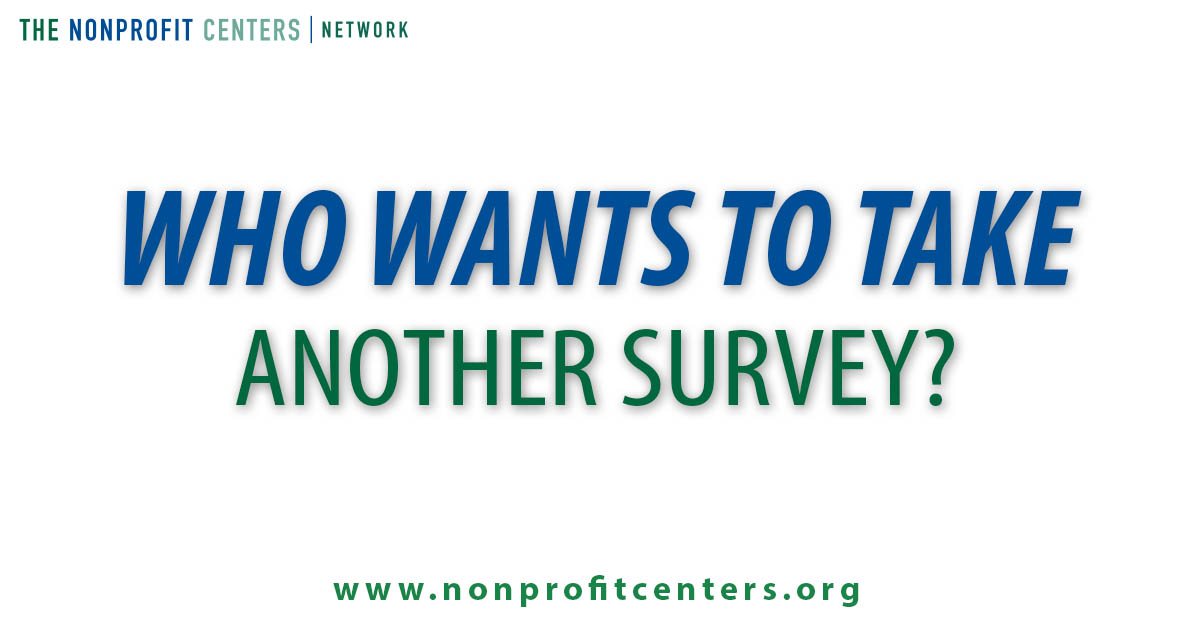I may have lost some of you already with this title. Thanks to free online tools, it’s extremely easy to make and distribute surveys, which also means many surveys land in our own laps.
We know many surveys out there gather important information. I mean, without surveys, we might not know that, “Individuals age 75 and over averaged 51 minutes of [leisurely] reading per day whereas individuals ages 15 to 44 read for an average of 10 minutes or less per day.”1 Which means, I better wrap this up quickly.
But what about this statistic from 2013? “Nearly 70 percent of full time American workers hate sitting, yet 86 percent do it all day, every day…an average of 13 hours a day and sleeping an average of 8 hours resulting in a sedentary lifestyle of around 21 hours a day.”2 I think half of you just walked away from your computer. The article adds, “30 percent even responded that they would rather go without coffee for a week to stand.” Okay, this is a serious problem.
Our NCN State of the Shared Space Sector Survey will be coming out shortly, and I’m sorry to say, it will involve some reading. And it will not be able to help you have less coffee or more exercise (unless you use a standing desk with a stair stepper.)
Surveys about taking surveys tell me that only 30-40% of you will respond to us,3 but here are 5 reasons you should fill out ours:
- You will benefit! (I’m not just saying that) The more people that fill it out, the more data we have. The more data we have, the better we can tell the story of nonprofit shared spaces in North America. If we can continue to explain (with updated information) how nonprofit centers and shared space save nonprofits money, increase collaboration, and keep nonprofits in hot real estate markets, you all win! Why? Funders will fund your project and other projects, because their resources are used more efficiently.
- “But my center has been built and funded!” Of course you care about others, but your sentiment is valid. The data from this survey will let you know if you are using your resources in the best way. What staffing would be best for your center and budget? How can you better communicate with your tenants? How can you move from a deficit to break-even or surplus?*
- Your community will benefit! More shared spaces mean thriving nonprofits that better serve their community, especially when NCN membership or consulting guides you with best practices to do so! (wink, wink) When nonprofits save by sharing resources, more money is available for programming, serving your clients or expanding your impact in your field (the arts, environment, health, social justice – you name it).
- We will survey your tenants too! Yes, more surveys, but for other people. If 50% of your tenant Executive Directors fill out the survey, we will send the aggregate, raw (anonymous) data to your nonprofit center. This will help with evaluating your center and thus improve your services, which better nonprofits, the community…you get my drift!
- Prizes! Since you are all such altruistic nonprofit employees, I know you don’t need this incentive. Just in case, filling out the survey automatically enters you into a drawing for a $50 Amazon gift card, a free year of NCN membership, a free Livestream registration to Sharing Innovation on October 10th, or Executive Director Katie Edwards’ voice on your home answering machine.**
If that’s not enough incentive, know that we will follow industry recommendations of weekly email reminders and follow-up phone calls, because our response rate will increase if we do so. So, feel free to beat us to the punch as a preventative measure to reduce your inbox and voice mailbox clutter.
In all seriousness, we greatly appreciate you taking the time to fill this out and share how you do the awesome work that you do. We’ve all taken surveys when we don’t want to and feel your pain. So, go get yourself a coffee or some chocolate, grab your financials and tenant history/occupancy docs, and knock this out. Then take a walk!
1 https://www.bls.gov/news.release/pdf/atus.pdf
*Our 2015 data showed that 77% of centers had revenue that met or exceeded their expenses.
**I have not verified the latter with Katie yet. TBD

